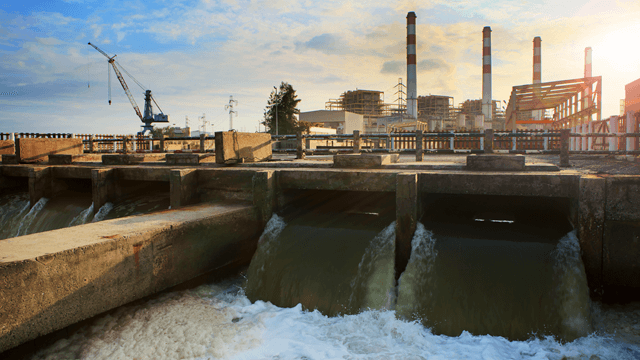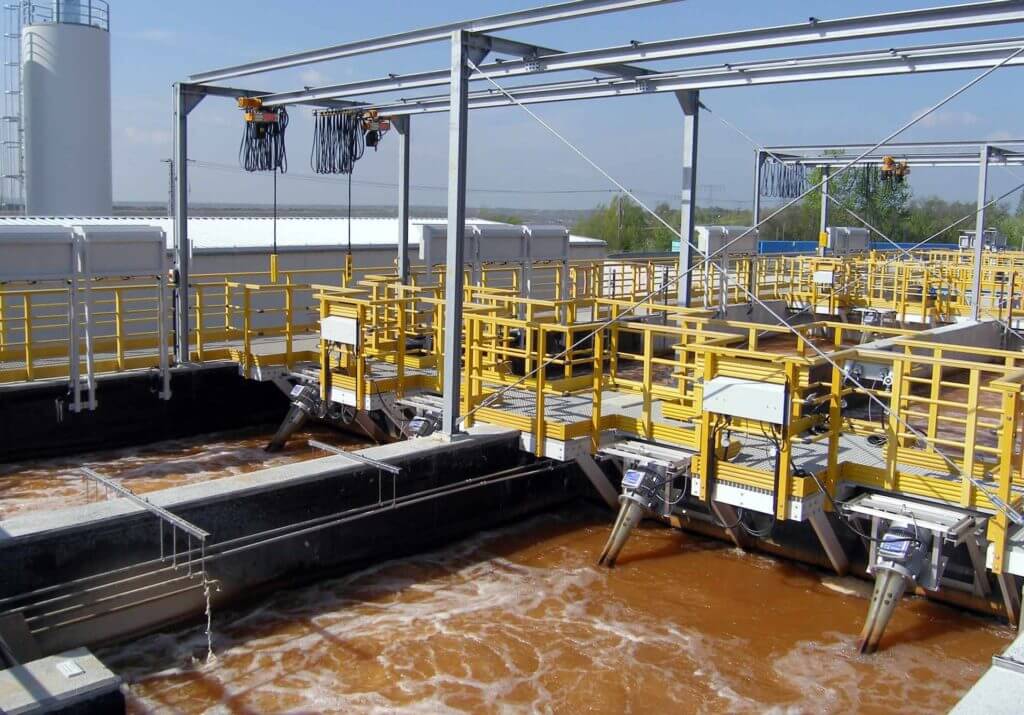Industrial Waste Water Treatment-- Advanced Solutions for Cleaner Effluents
Wiki Article
Key Strategies in Industrial Waste Water Treatment Processes
The treatment of industrial wastewater is an essential facet of ecological monitoring, involving a variety of techniques created to reduce the impact of impurities. From the basic physical approaches that separate solids to the sophisticated chemical and organic processes that target particular contaminants, each technique plays an essential duty in achieving water top quality requirements. Additionally, advancements in technologies such as membrane layer filtering and advanced oxidation processes provide ingenious options for boosting therapy efficacy. Understanding exactly how these approaches interconnect and their implications for sustainability raises essential concerns concerning the future of wastewater administration in sector.Physical Treatment Methods
Just how properly can physical therapy techniques address the intricacies of industrial wastewater? Physical treatment methods play a critical function in the initial stages of wastewater management, focusing largely on the removal of solids and big particulates. Strategies such as sedimentation, purification, and flotation are vital for reducing the focus of suspended solids, therefore enhancing the effectiveness of succeeding therapy procedures.Sedimentation involves the gravitational settling of solids, allowing for the separation of much heavier materials from the wastewater. This technique is specifically reliable in clarifying water prior to chemical or biological treatments.
Additionally, flotation protection methods, which utilize air bubbles to raise put on hold solids to the surface for removal, are effective in treating wastewater with high focus of fats, oils, and oils. In general, physical treatment approaches act as a critical initial step in the detailed management of commercial wastewater, making certain that the tons on succeeding treatment stages is lessened and enhancing overall treatment efficacy.
Chemical Therapy Methods
While physical treatment methods prepared for efficient wastewater monitoring, chemical therapy techniques are important for resolving the extra complex pollutants frequently discovered in commercial effluents. These methods utilize various chemical agents to precipitate, reduce the effects of, or oxidize hazardous substances, ensuring an extra comprehensive elimination of contaminants.
One common approach is coagulation and flocculation, where chemical coagulants such as light weight aluminum sulfate or ferric chloride are included to advertise the gathering of suspended bits. This process enhances solid-liquid splitting up, decreasing turbidity and boosting water top quality. Furthermore, neutralization procedures are utilized to adjust the pH of wastewater, making use of bases or acids to neutralize acidic or alkaline streams, respectively.
Oxidation-reduction reactions play a vital role in degrading natural impurities and virus. Chemical oxidants like ozone, hydrogen, or chlorine peroxide are utilized to damage down intricate organic substances, making them less unsafe or extra naturally degradable. In addition, advanced oxidation processes (AOPs) integrate multiple oxidation strategies to boost pollutant elimination performance.
Biological Treatment Procedures
The performance of wastewater treatment is considerably enhanced by organic treatment procedures, which harness the all-natural metabolic tasks of microbes to break down raw material and eliminate contaminants. Industrial Waste Water Treatment. These processes primarily entail anaerobic and cardio digestion, each customized for certain kinds of wastewaterCardio therapy processes use oxygen to sustain microbial development, advertising the malfunction of natural pollutants their explanation into co2 and water. Usual techniques include activated sludge systems, where oygenation tanks promote the mixing of wastewater with microbes, and flowing filters, which motivate biofilm development on media surfaces.
Conversely, anaerobic therapy procedures happen in the lack of oxygen, utilizing anaerobic bacteria to decompose organic matter, causing biogas manufacturing, a renewable resource resource. Anaerobic digesters are commonly utilized in commercial settings for this objective, properly reducing the volume of sludge while creating important biogas.
The choice of a biological treatment approach relies on wastewater characteristics, treatment goals, and regulative criteria. The combination of biological processes in wastewater treatment not just boosts pollutant elimination effectiveness however also advertises sustainability by decreasing chemical usage and sustaining source healing.
Advanced Oxidation Processes

Usual AOP techniques include Fenton's ozonation, photocatalysis, and reagent. Fenton's reagent, a mix of hydrogen peroxide and ferrous iron, militarizes the formation of hydroxyl radicals, making it efficient for treating wastewater having phenolic substances and other stubborn compounds.
AOPs provide numerous benefits, consisting of reduced sludge manufacturing and the ability to treat wastewater with high focus of natural contaminants. Nonetheless, the implementation of AOPs needs careful consideration of functional specifications and cost-effectiveness, ensuring that these advanced strategies are appropriately integrated into existing wastewater treatment systems.
Membrane Layer Filtration Technologies

Microfiltration is reliable for getting rid of put on hold solids and microorganisms, while ultrafiltration targets smaller organic molecules and viruses. Nanofiltration links the void between ultrafiltration and turn around osmosis, efficiently getting rid of divalent ions and organic substances. Reverse osmosis offers the highest degree of filtration, made use of mostly for desalination and getting rid of mono-valent ions.
Membrane innovations offer countless advantages, consisting of low energy intake compared basics to typical therapy approaches, modular style for scalability, and the capacity for water healing and reuse. However, difficulties address such as membrane layer fouling and the requirement for normal upkeep should be addressed to make certain system efficacy. Generally, membrane filtration technologies represent a vital part of modern industrial wastewater therapy methods, promoting sustainability and resource preservation in water monitoring.
Final Thought
In final thought, commercial wastewater treatment utilizes a varied array of methods, consisting of physical, chemical, biological, and progressed approaches. Continued improvements in these methodologies will additionally improve the effectiveness and performance of wastewater treatment processes in industrial setups.The treatment of industrial wastewater is an essential aspect of environmental administration, entailing a range of methods created to minimize the impact of pollutants.Exactly how properly can physical treatment techniques attend to the intricacies of commercial wastewater?Advanced oxidation procedures (AOPs) represent an advanced method in industrial wastewater therapy, made to effectively deteriorate organic contaminants that are commonly immune to standard therapy approaches (Industrial Waste Water Treatment).In conclusion, industrial wastewater treatment uses a diverse array of techniques, including physical, chemical, biological, and advanced methods. Continued developments in these methods will certainly additionally enhance the efficiency and performance of wastewater therapy procedures in industrial settings
Report this wiki page